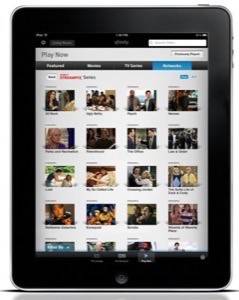Cable companies know the threat that lies ahead of them. The percentage of consumers who “cut the cord” and cancel their cable subscriptions isn’t a huge one, but it’s growing. Meanwhile, a new generation of TV watchers is growing accustomed to watching shows online, even if it’s the next day or they’re catching up on a series months after the fact on Netflix. That contingent of “cord never getters” is what’s really going to eat away at big cable’s business model over time.

To preempt the threat, companies like Comcast have been moving aggressively in the digital space. From testing out streaming live TV on the Web to developing tablet apps that make a subscription more compelling, big cable is wasting no time repositioning itself for the future.
The latest weapon in Comcast’s arsenal is Streampix, a streaming service that digs deep into the archives of popular television shows and makes episodes available across multiple devices. It’s being framed as the company’s answer to Netflix and Hulu. At $4.99 a month, Streampix is priced competitively against Netflix and Hulu and it even narrowly beats the monthly cost of an Amazon Prime membership, which comes with a growing library of streaming video content.
The thing about Streampix, however, is that it’s being bundled with Comcast’s traditional cable subscription packages. So it’s cheaper than the online-only streaming services only if one overlooks the ever-rising cost of a proper cable subscription, something consumers often cite as a reason they cut the cord.

Initiatives like StreamPix and Xfinity TV Everywhere may make cable packages more convenient and appealing to consumers, but they don’t make them cheaper or eliminate the customer service gripes or all-or-nothing content selection that annoys some consumers.
Cable’s disruption at the hands of Web-only streaming services is real, but it’s moving very slowly. Not only are viewers turning more to the Web, but statistics show that they’re going back to broadcast as well, buying up antennas to pull in HD terrestrial broadcast signals to supplement Web-based content.
At the end of the day, cable companies are trying to preserve their traditional business model while building up a new one. It’s a cautious, sensible move for a company that makes so much money through a legacy model, but it’s not always an approach that works flawlessly. Just ask newspapers.
That isn’t to say that the Web and mobile streaming offerings offered by Comcast and their competitors couldn’t one day be spun off into stand alone services and offered to consumers at a cheaper rate. But in the meantime, the risk of cannibalizing what brings in most of their revenue isn’t one they’re willing to take.

















